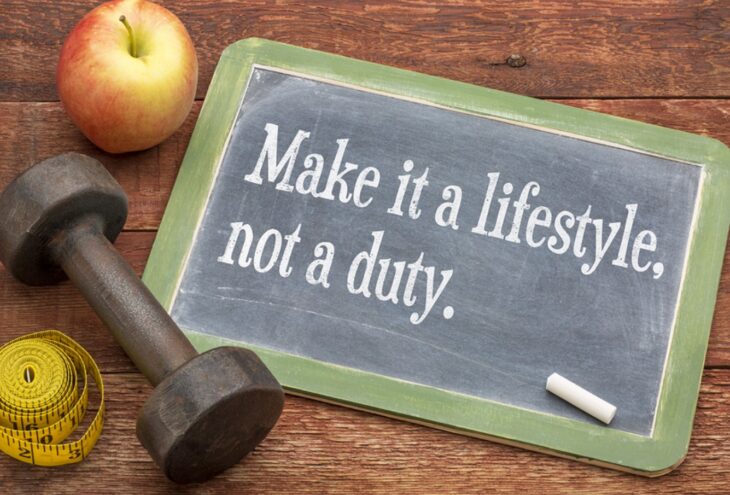Erectile dysfunction happens when you can’t get an erection, or when you can’t hold the erection solid enough to have intercourse. Mild to mild erectile dysfunction is common—it affects around half of men at 50 years of age and is rapidly widespread above 50.
Being unable to sustain an erection may create complications with your relationship or self-confidence, although there are ways to manage or even cure the disorder.
While medications like Viagra are on the market, certain people would choose a more natural solution. Check this, if you want to consider enlargement pills. Here are a few approaches that you should use at home to better cure erectile dysfunction.
Is it in your head?

Source: Prevention.com
Although you might think of erectile dysfunction as an older man’s epidemic, statistics indicate that this disorder affects men of all ages. In reality, some study shows that approximately 26% of new ED cases are males under the age of 40.
In older males, erectile dysfunction is also related to chronic health conditions, such as cardiac failure or diabetes. But what about the young, safe guys? What is the reason for an erectile dysfunction encountered by a 30-year-old guy in great health?
In the lack of physical health issues, we ought to look a bit further into the root cause of erectile dysfunction. What you do not realize is that psychological causes are a significant influence to certain ED events. Data indicates, in reality, that up to 20% of ED cases are psychological in nature.
If you have erectile dysfunction, and you can’t fault it on existing health issues, you may believe like all of your concerns are in your mind. Although psychological problems may be at the root of the dilemma, they are just as true as biochemical triggers of ED.
1. Kegel Workout
Kegel movements aim to reinforce the muscles that hold the erection complete and hard. These muscles, called your pelvic floor muscles, sit under your prostate and rectum, and their intensity will influence your ability to sustain erection. This is because as you contract your pelvic floor muscles, you place strain on the nerves of your penis, making it difficult for your blood to pump out of your penis to hold your erection intact.
You will find the pelvic floor muscles by behaving as though you’re attempting to avoid the mid-flow peeling to prevent yourself from moving the steam. The muscles you’re experiencing are the ones you’re supposed to use for kegel exercises.
2. Ginseng’s

Source: Prozis
While further study is required, there is some indication that Korean red ginseng may aid in the treatment of erectile dysfunction. Ginseng functions by making the muscles of the penis relax, Brant notes, “it is this relaxation that allows blood to fill the penis and create an erection.”
A 2008 study of many research showed that taking 600 milligrams of red ginseng enabled men to get erections. However, all of these experiments have been performed in small samples and broader studies are also required to see if these findings relate to the general public.
You will buy red ginseng marketed as pills or as a drink, but Brant warns that these supplements are not necessarily effective. As the supplements are not controlled by the FDA, the dosages on the packaging may not be correct or may include other non-listed ingredients.
It’s crucial to speak to your doctor before you pursue over-the-counter erectile dysfunction medications to make sure you’re not putting your wellbeing at danger.
3. Changes in lifestyle

Source: Neways Somatic Psychotherapy & Coaching
Having an erection requires all of the structures in your body, including the nerves, blood supply, and muscles. For this cause, conditions associated with an unhealthful lifestyle, such as cardiac disease and obesity, can place you at greater risk for erectile dysfunction.
While stress and anxiety are two separate topics, they are strongly linked when it comes to erectile dysfunction problems. Stress is the root cause in many situations. Except the stress induces fear, which then generates further stress—turning it into a dangerous circle.
However, once you look at the physical side of things, you can find that tension and anxiety are far more directly linked than you would think.
Many men don’t know that there are various forms of erections—three, to be precise. Reflexive erection is induced by physical stimuli, whereas psychogenic erection is activated by sensory or mental thoughts. Nocturnal erection is just as it looks like—the one that happens through sleep.
Both three include unique body processes, including hormones, organs, blood vessels, the nervous system, and feelings. If either of these mechanisms were corrupted, it may trigger ED.
In the case of anxiety and tension, these things will impair the brain’s capacity to transmit the required messages to cause the appropriate physical response—an erection. Stress and anxiety may also add to the continuing ED loop, as described earlier.

Source: bim.physio
Exercise more. When you workout, the body releases more nitric oxide, a chemical that allows the muscles in your blood vessels to loosen, causing the blood to circulate more easily. This helps the penis to be erect and erect more quickly.
Stop smoking. If you smoke tobacco, you are about twice as likely to develop erectile dysfunction as non-smokers. This is because the contaminants in the cigarette destroy the lining of your blood vessels, known as endothelium. Endothelial is what creates nitric oxide, because without plenty of it, it is much more complicated for blood to pass through the penis.
Cut the drink off. Drinking a low to moderate volume – less than 14 drinks per week for men – is unlikely to raise the chance of erectile dysfunction. However, if you consume more than that, particularly for a long period of time, you can have a hard time sustaining an erection. This is because alcohol is dilating the blood arteries, causing blood to flow through your penis, but also forcing it to rush out, making your penis flaccid.
Erectile dysfunction is a common problem for men, particularly when you get older, but there are a variety of ways to handle it at home. If neither of these approaches operate for you, speak to your doctor about other treatments, such as prescription medications.
